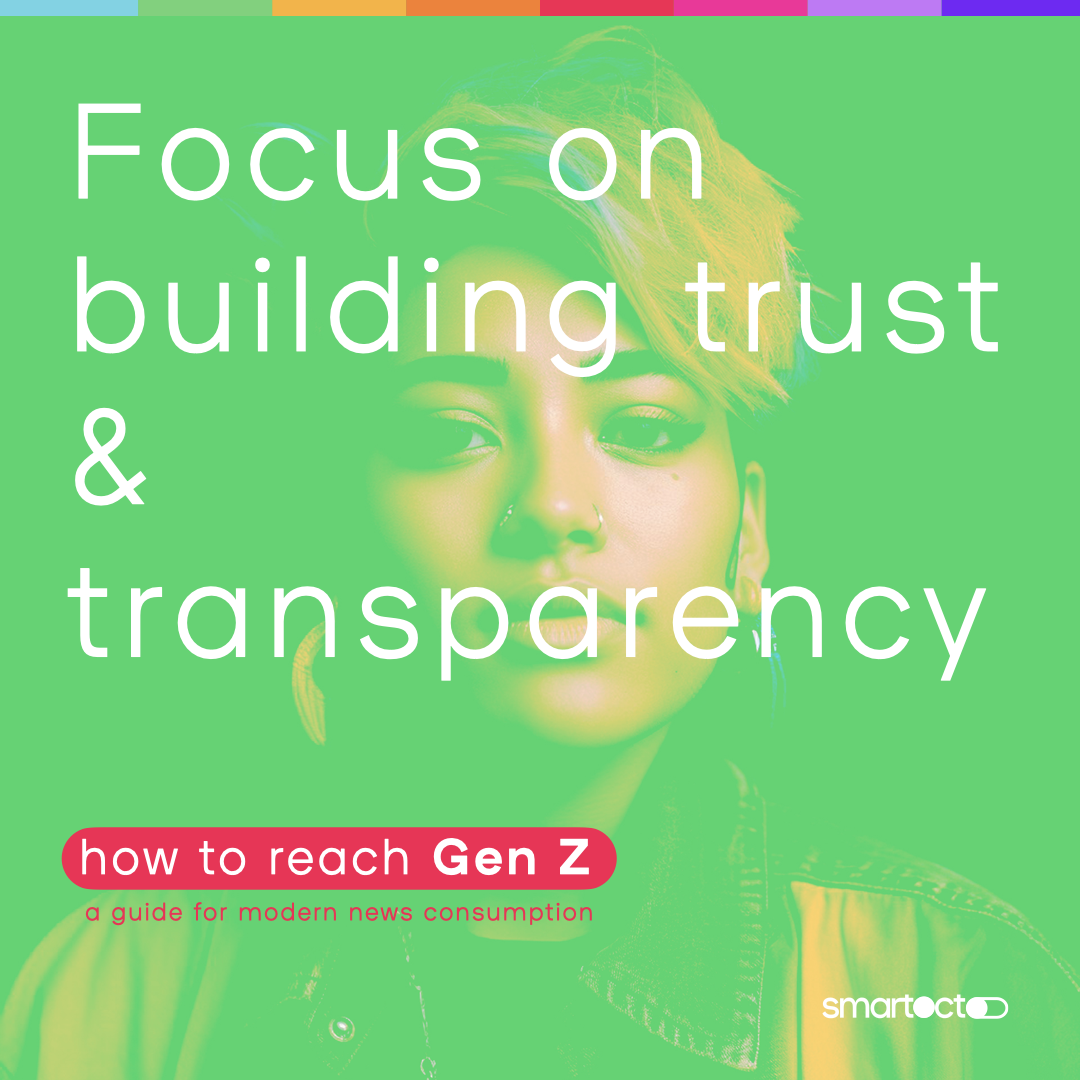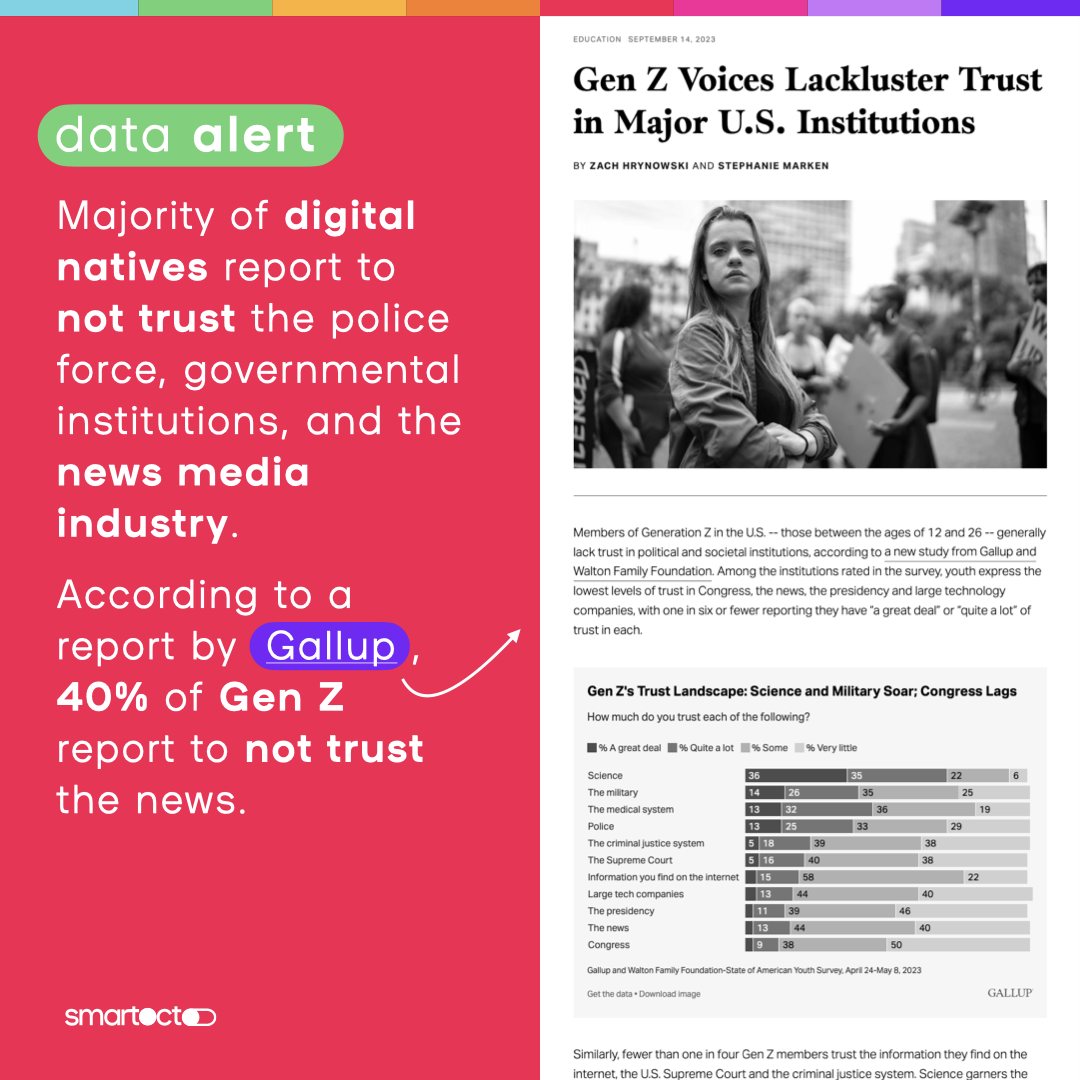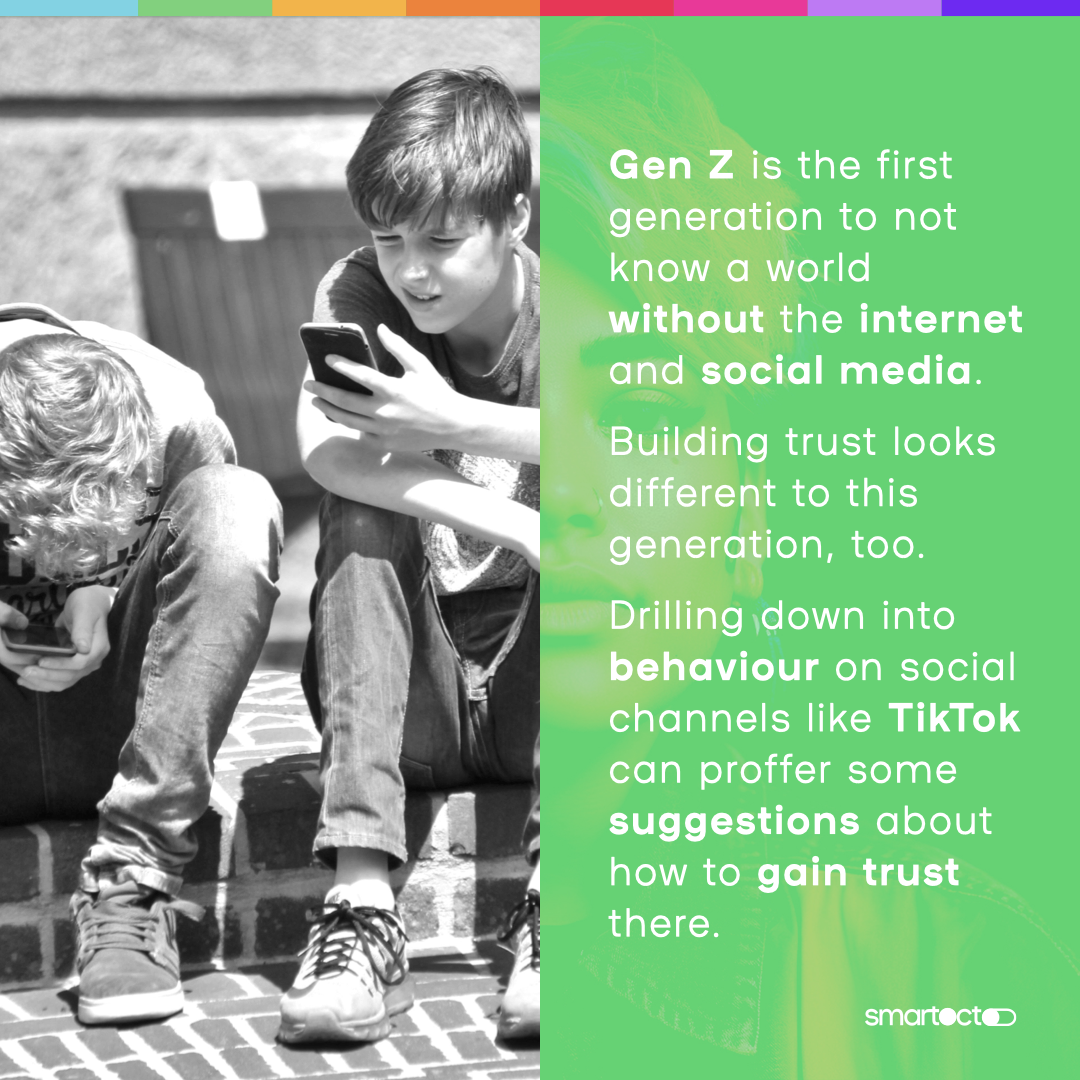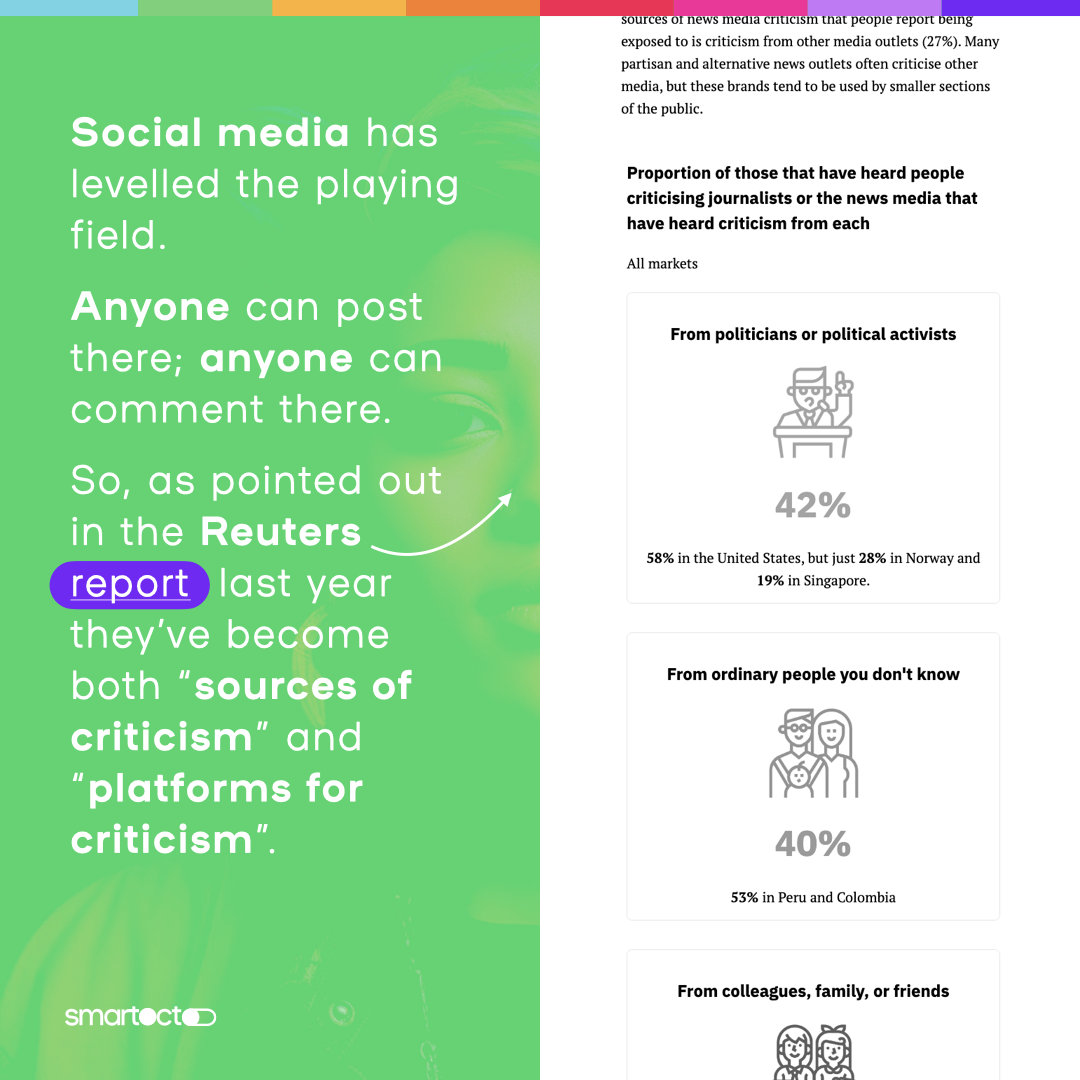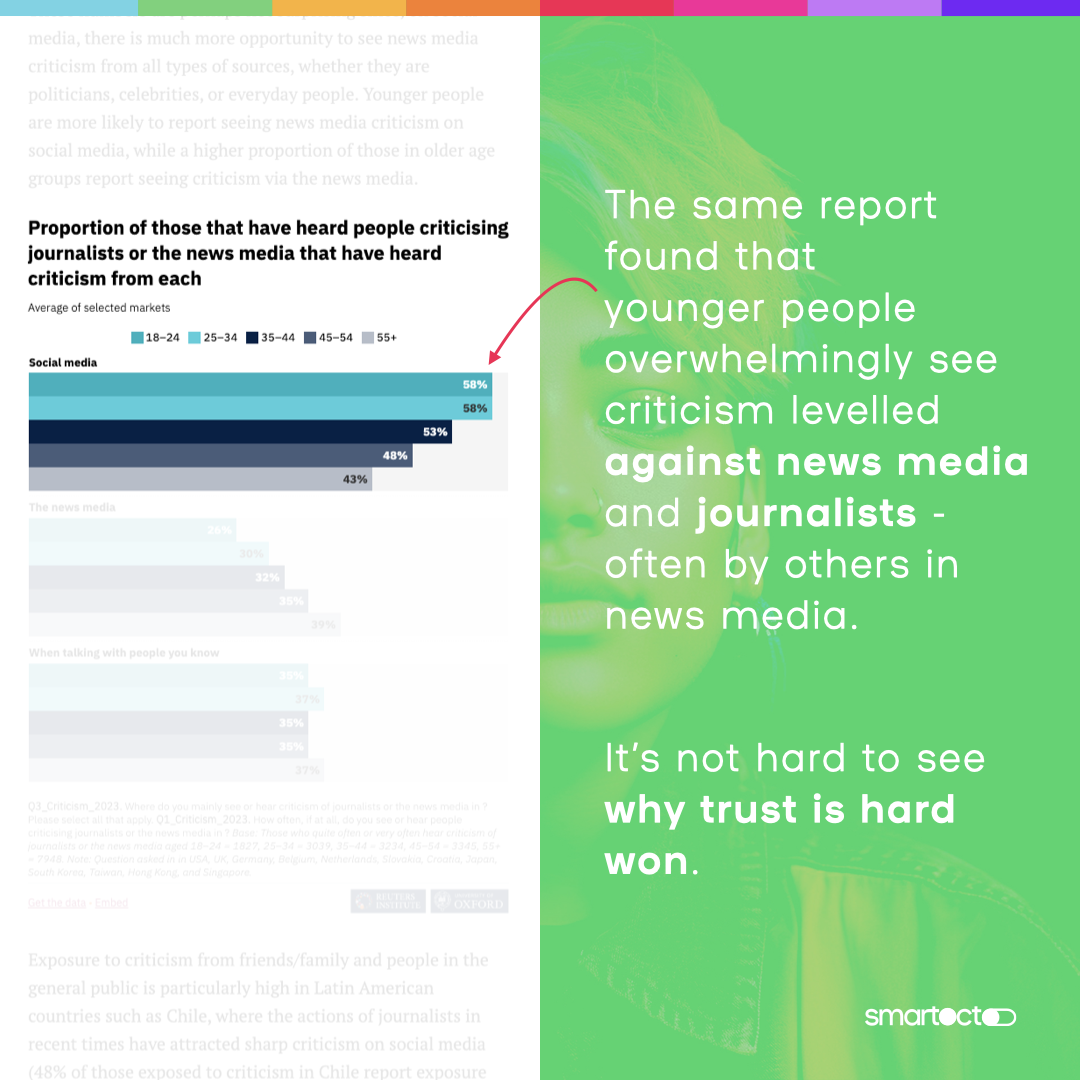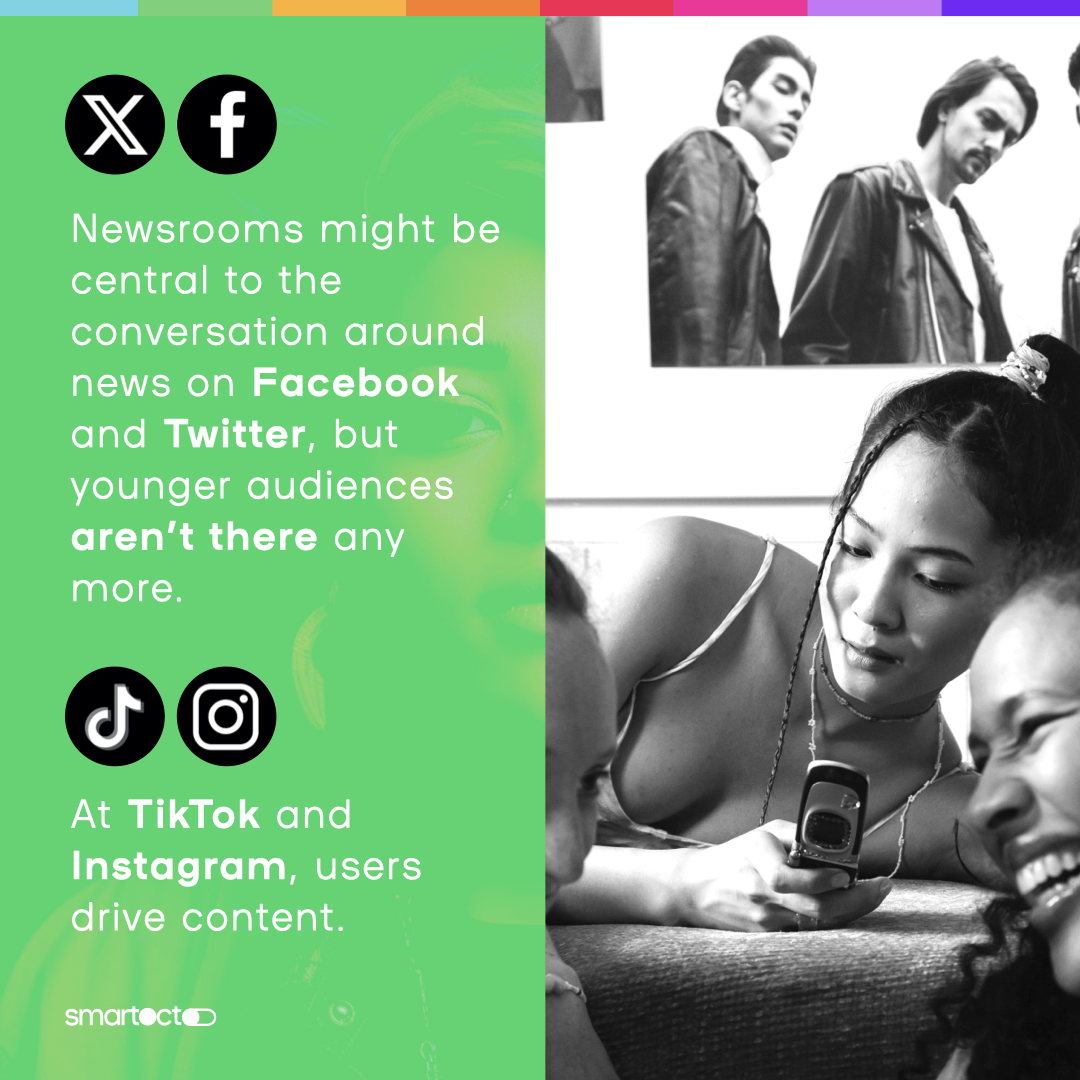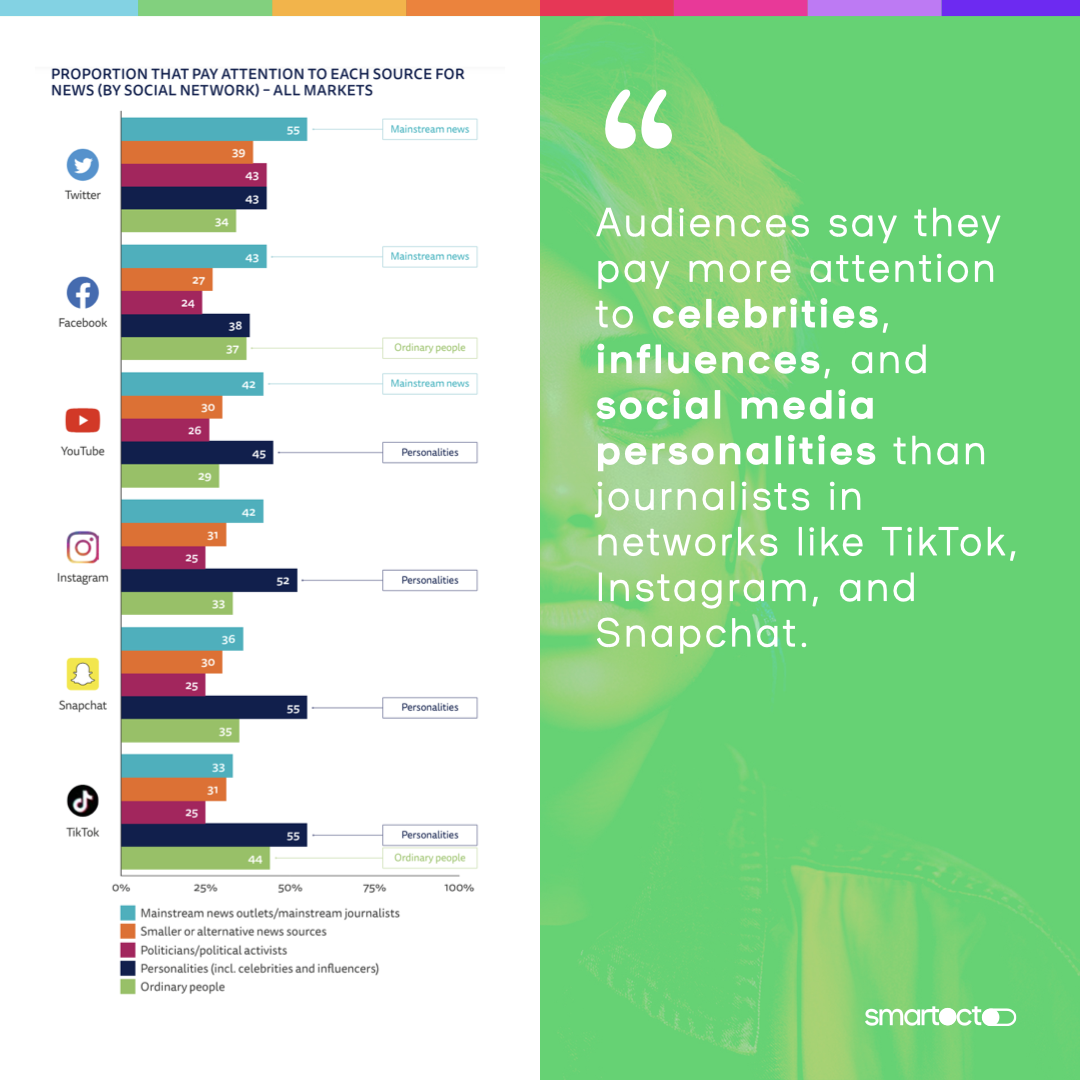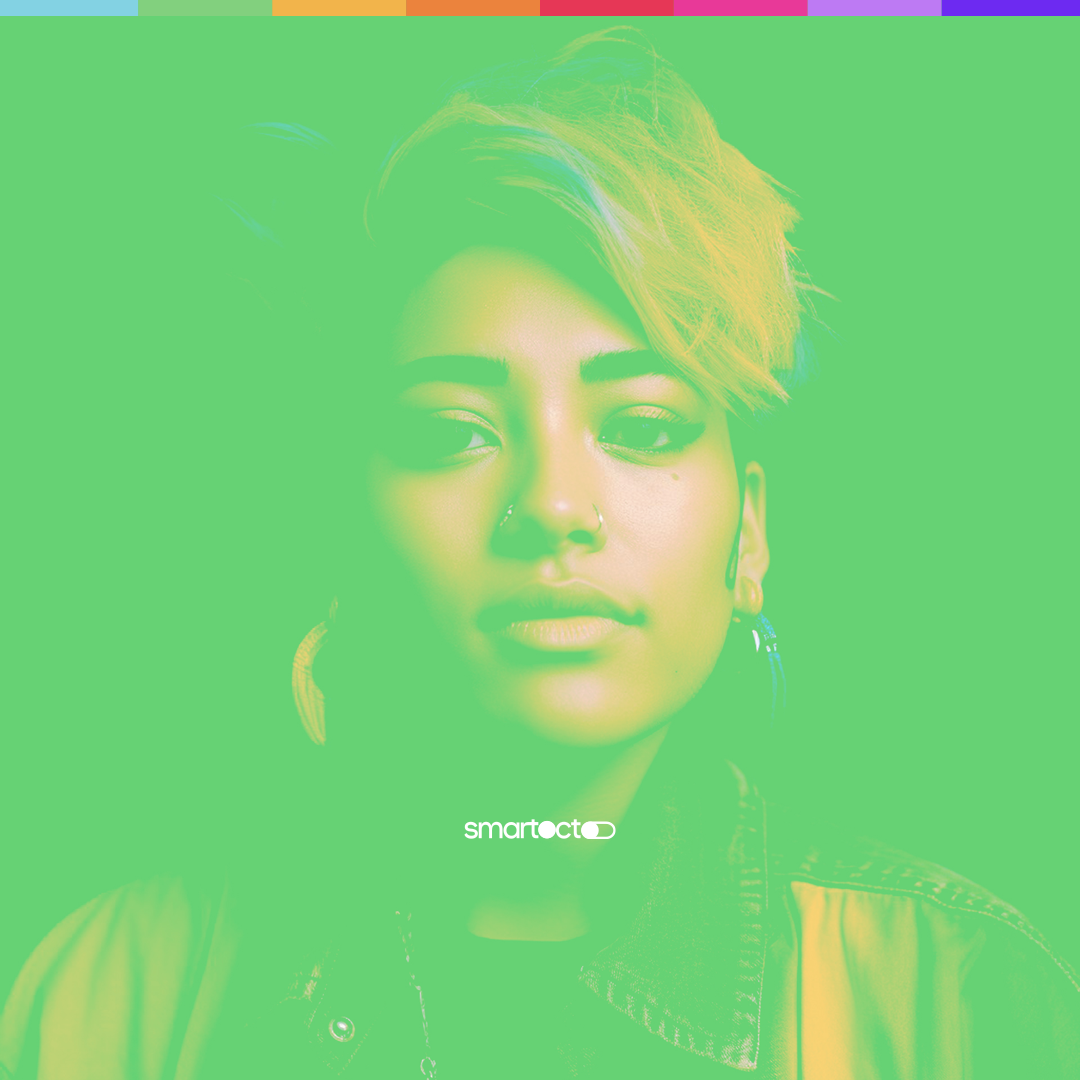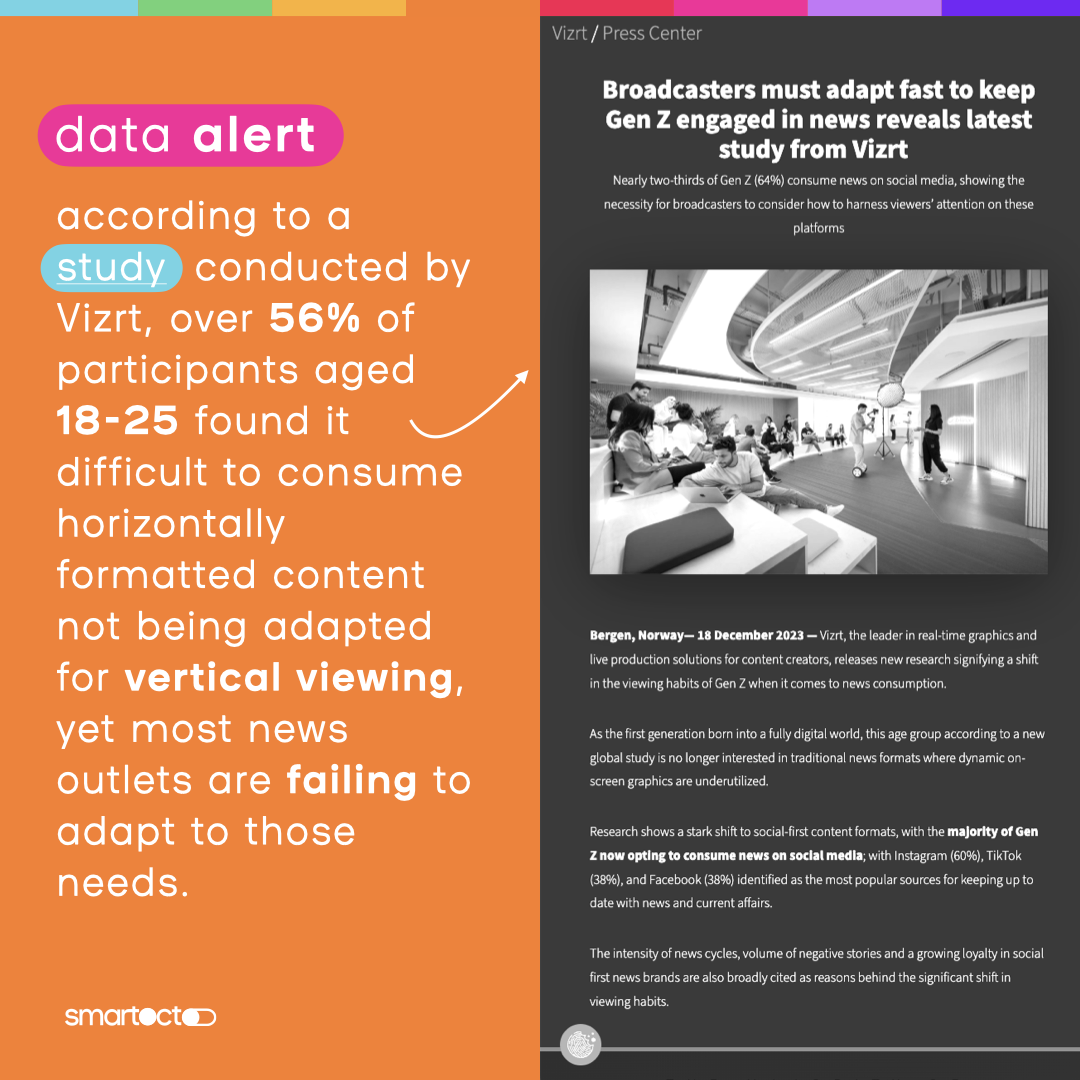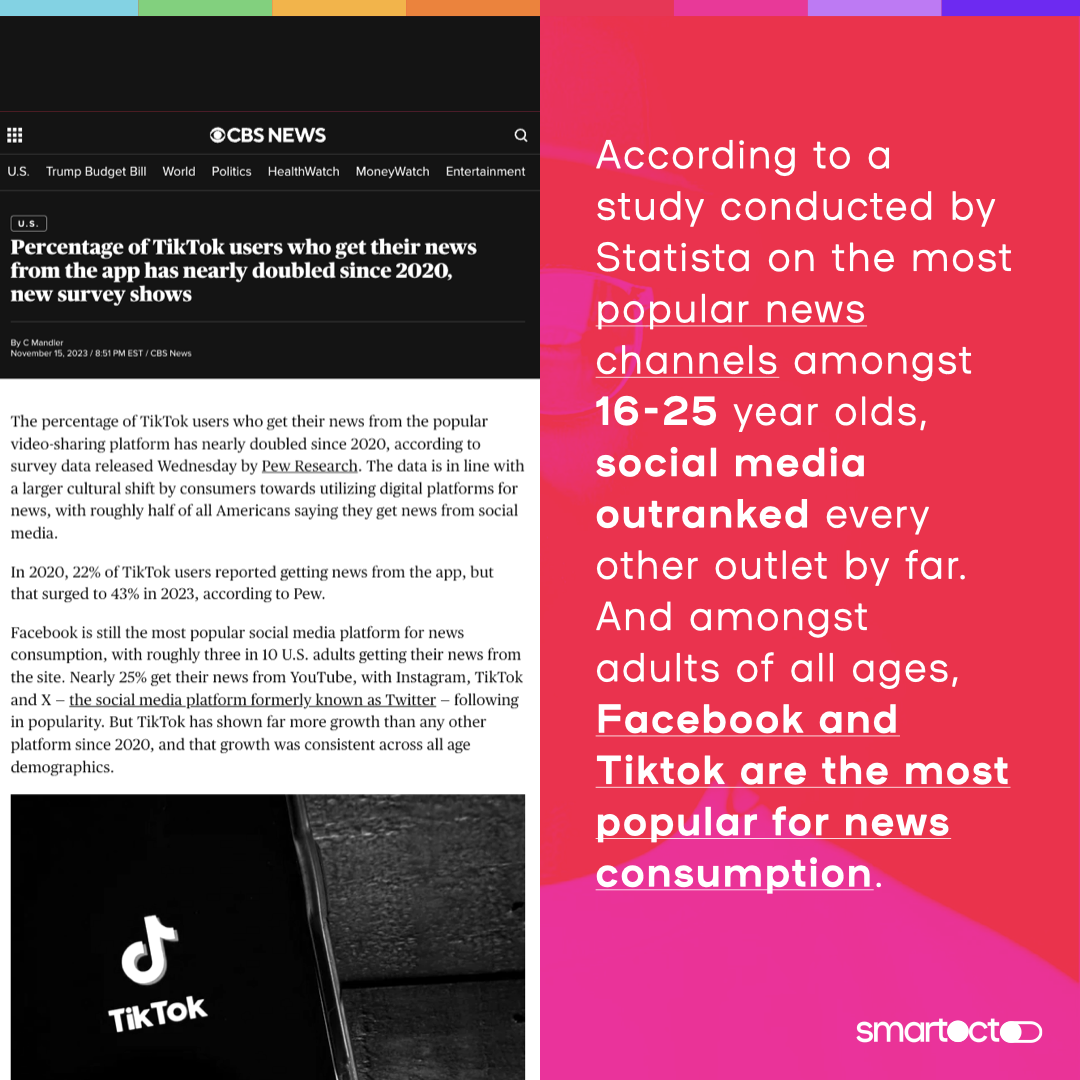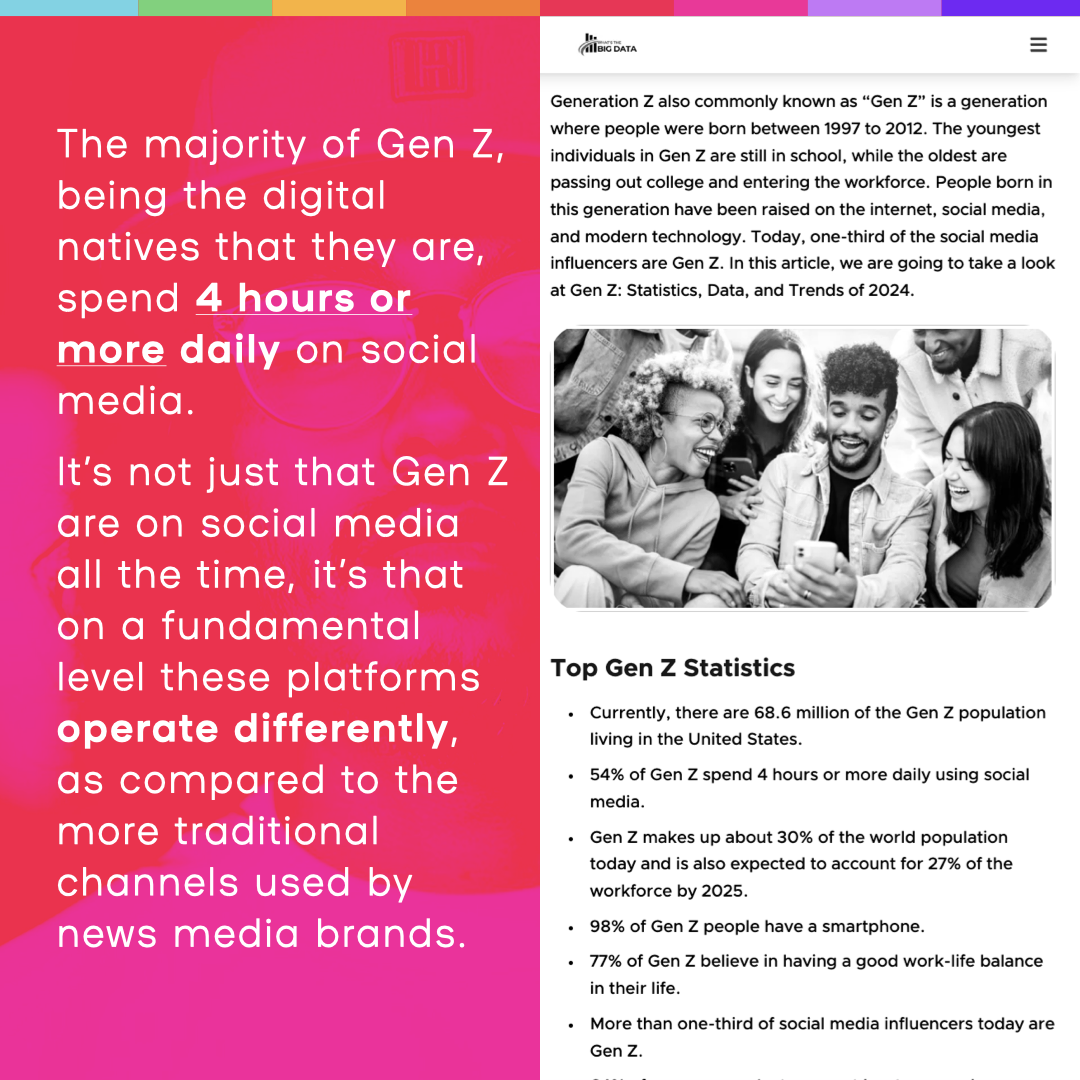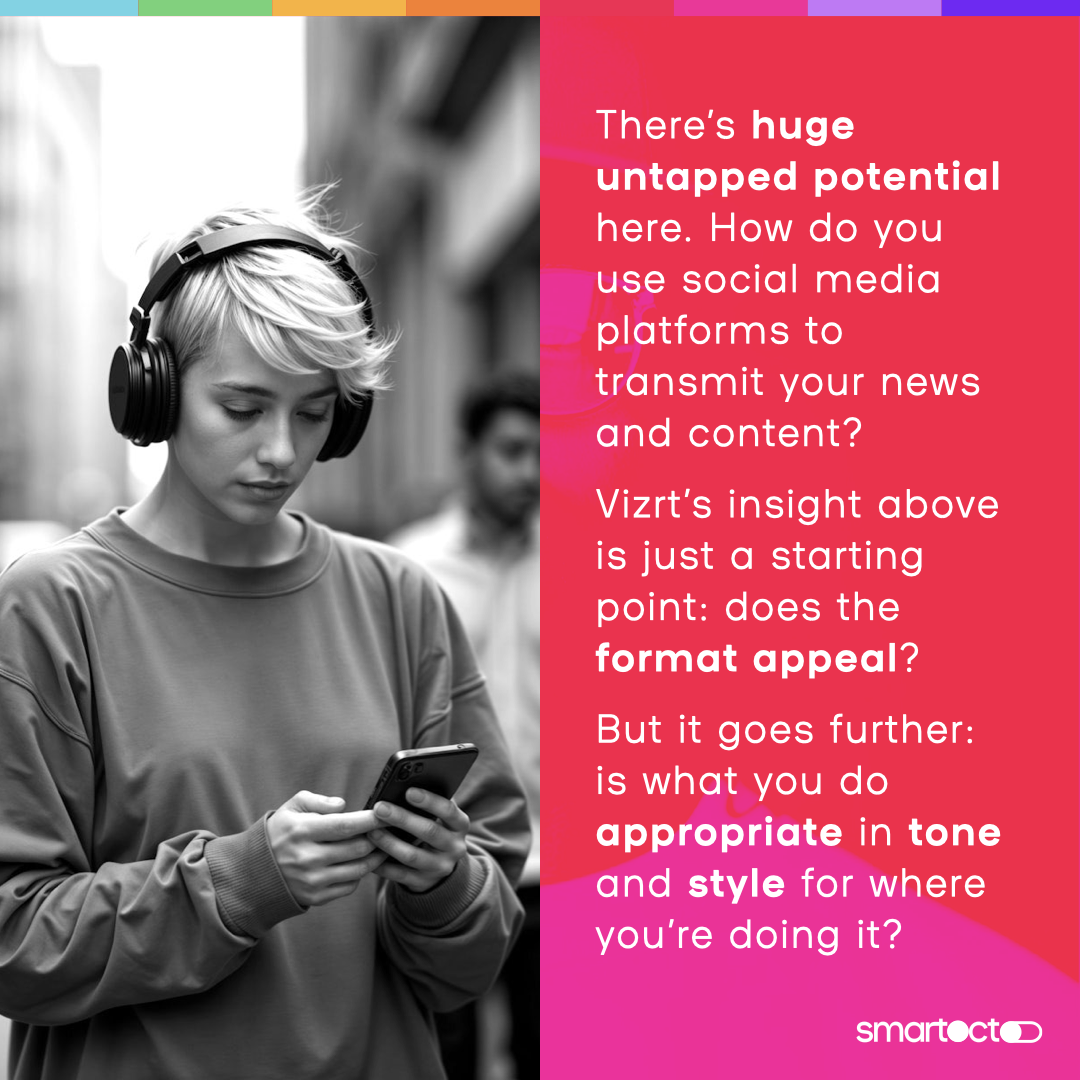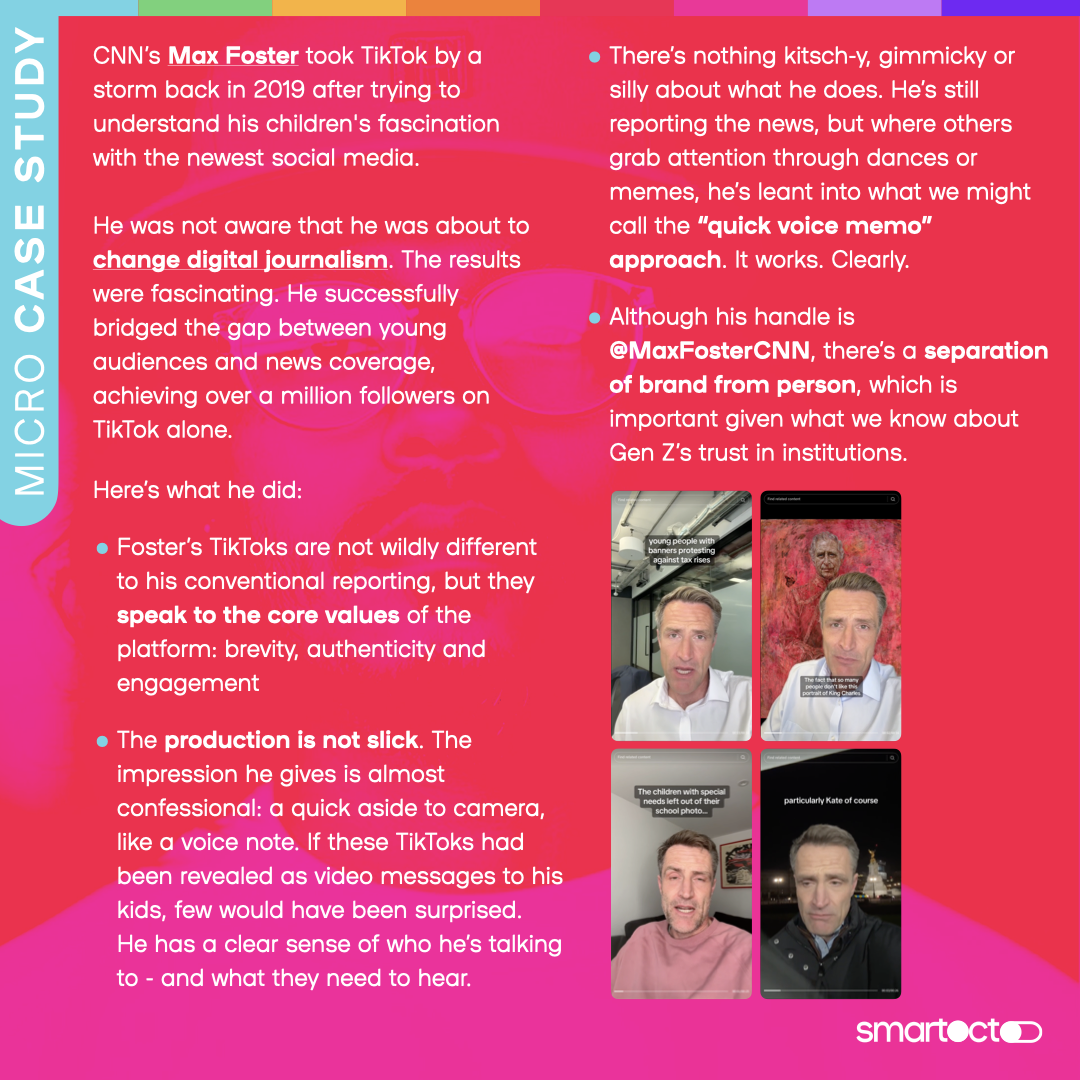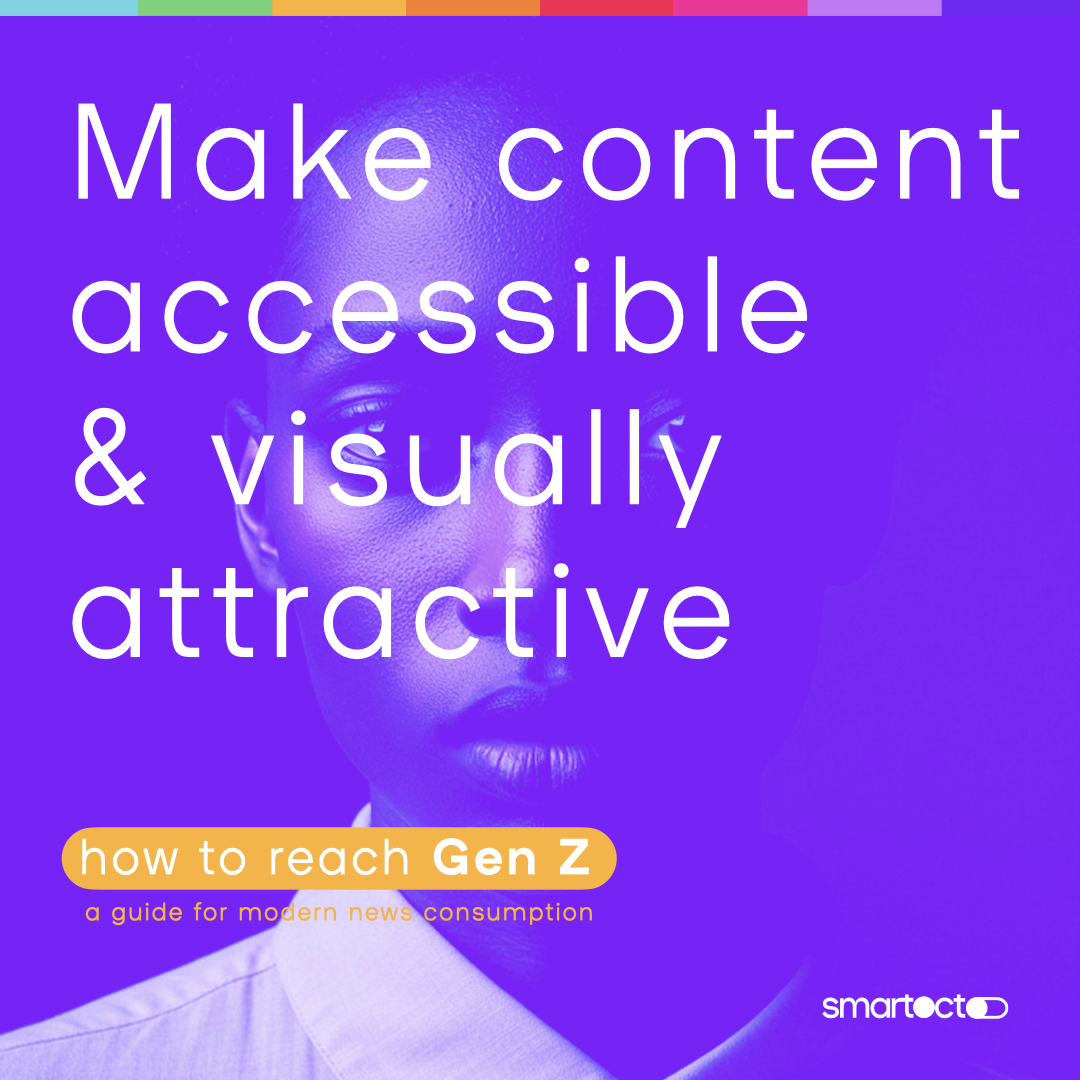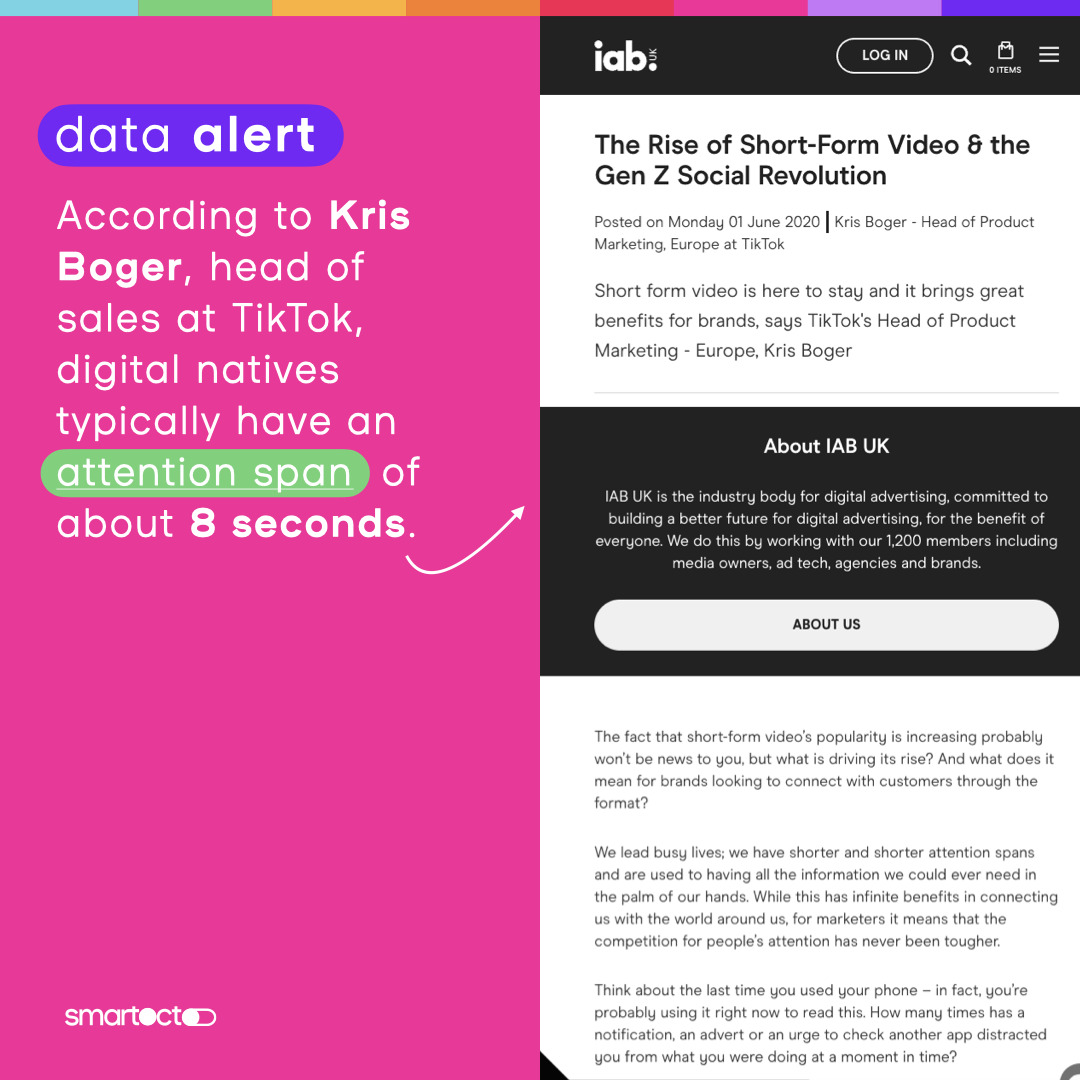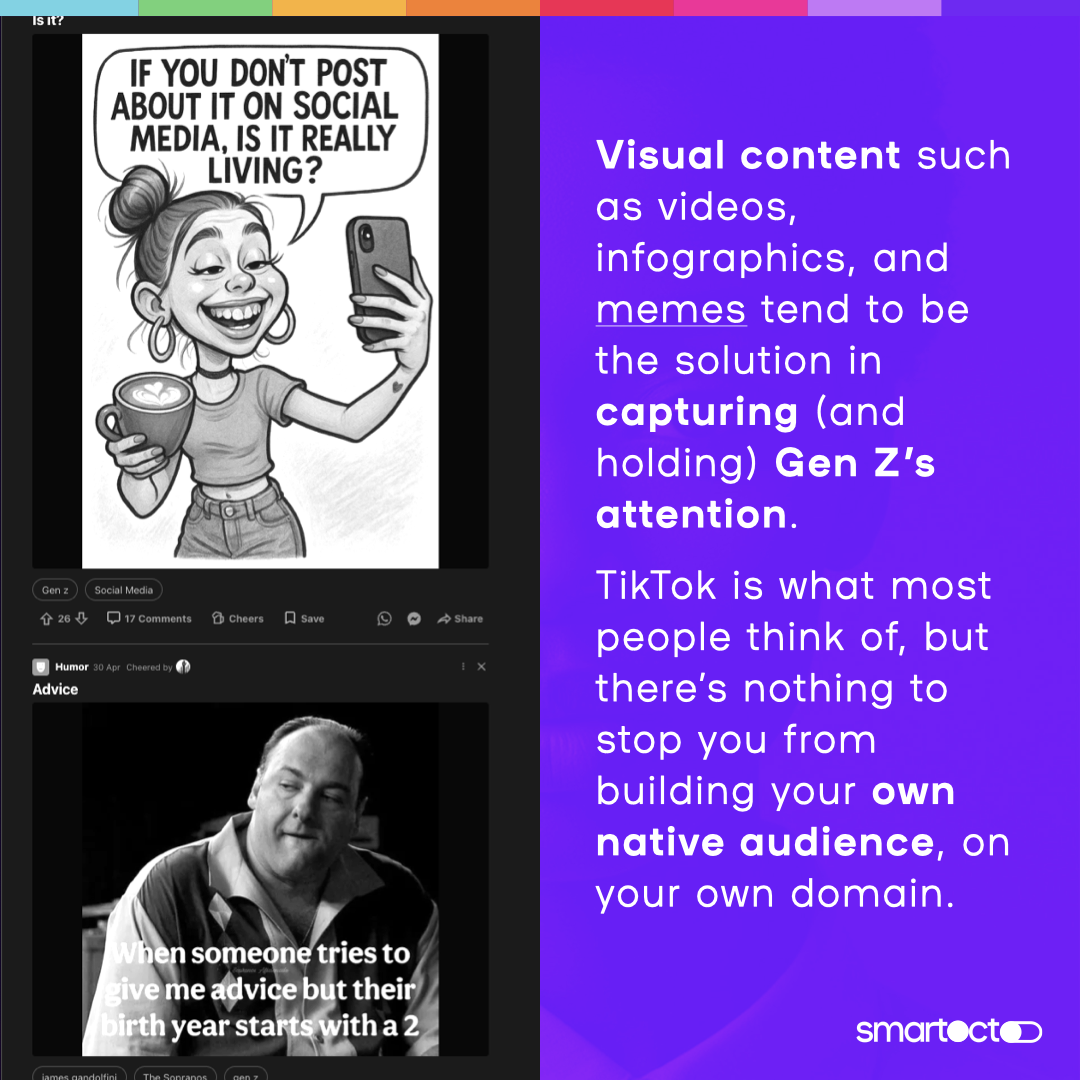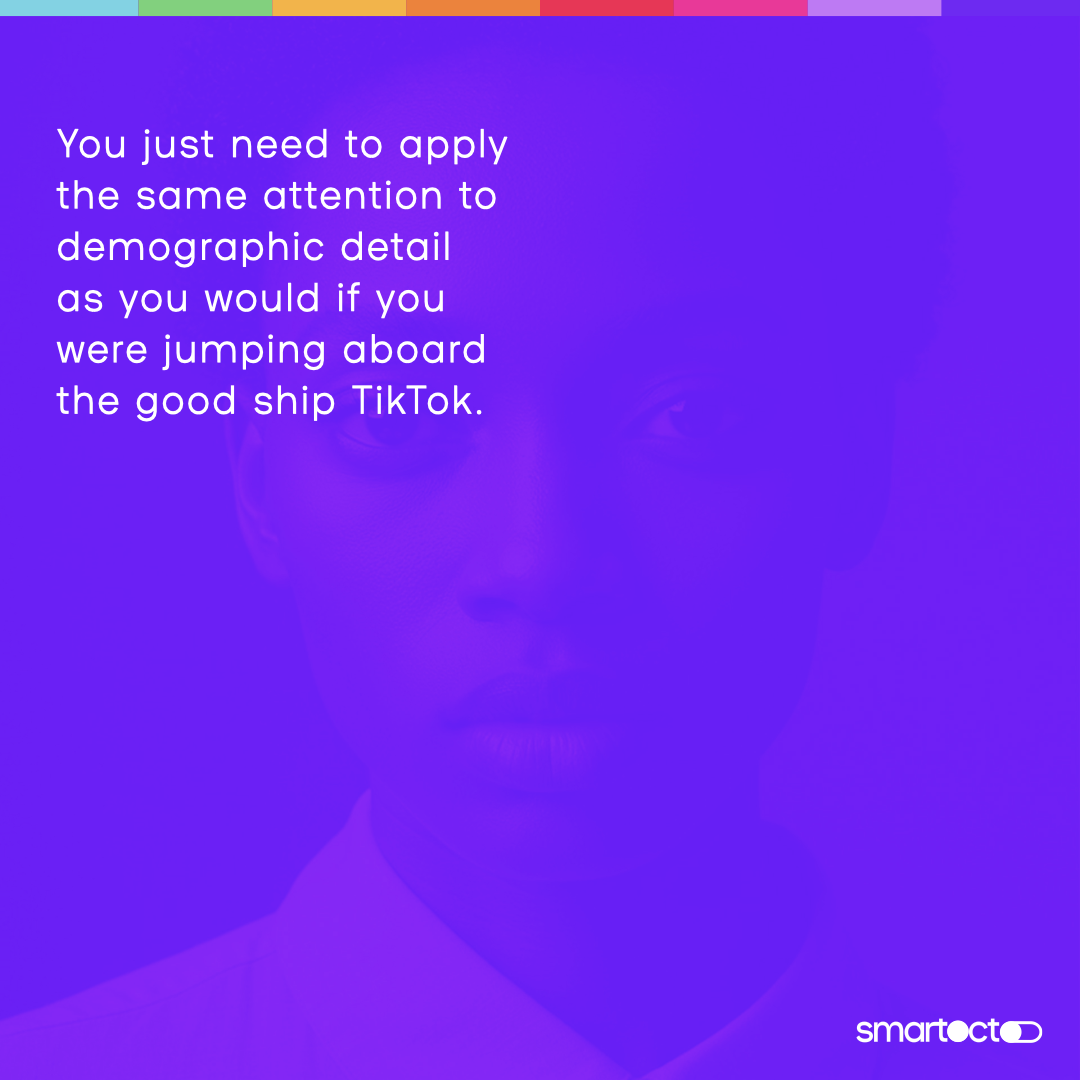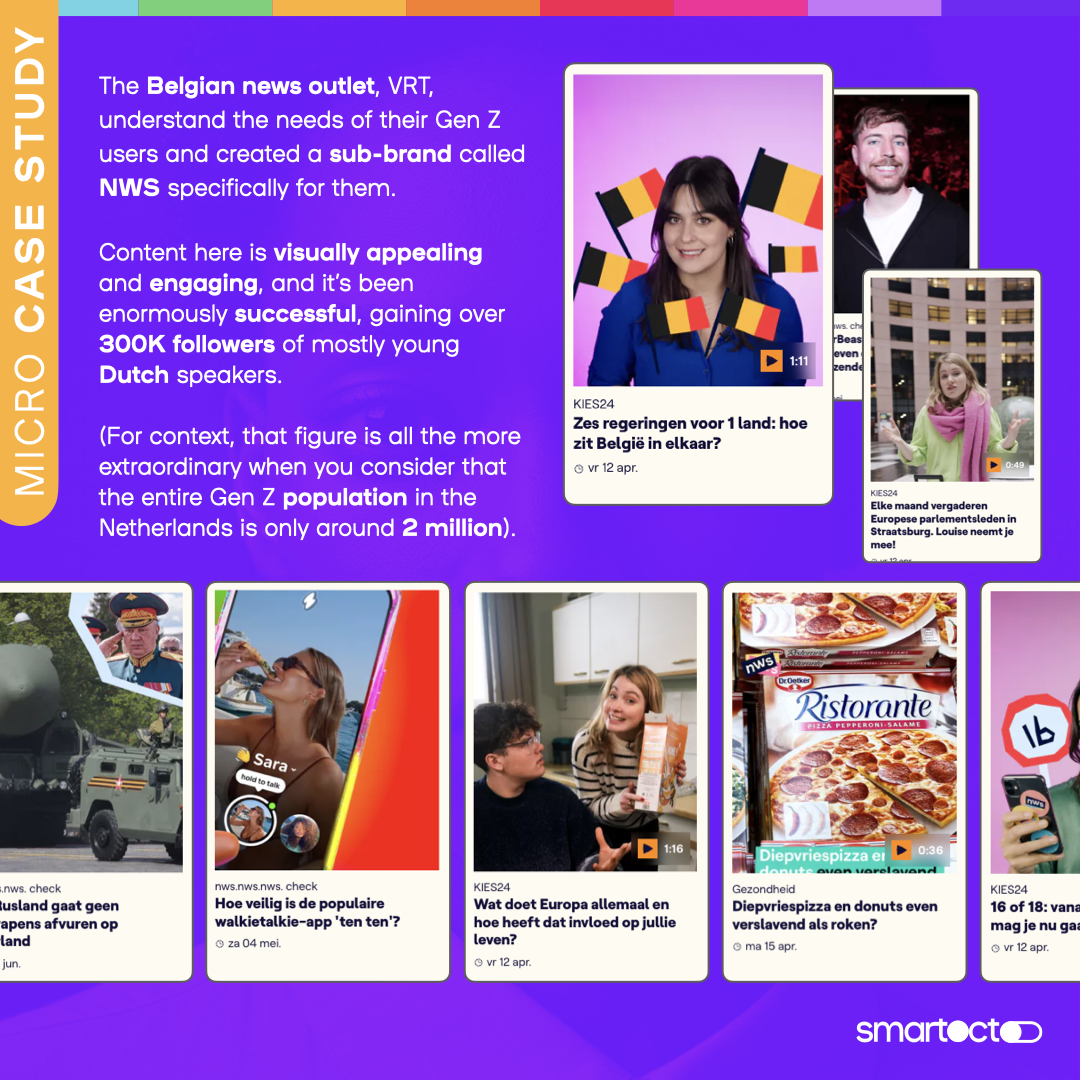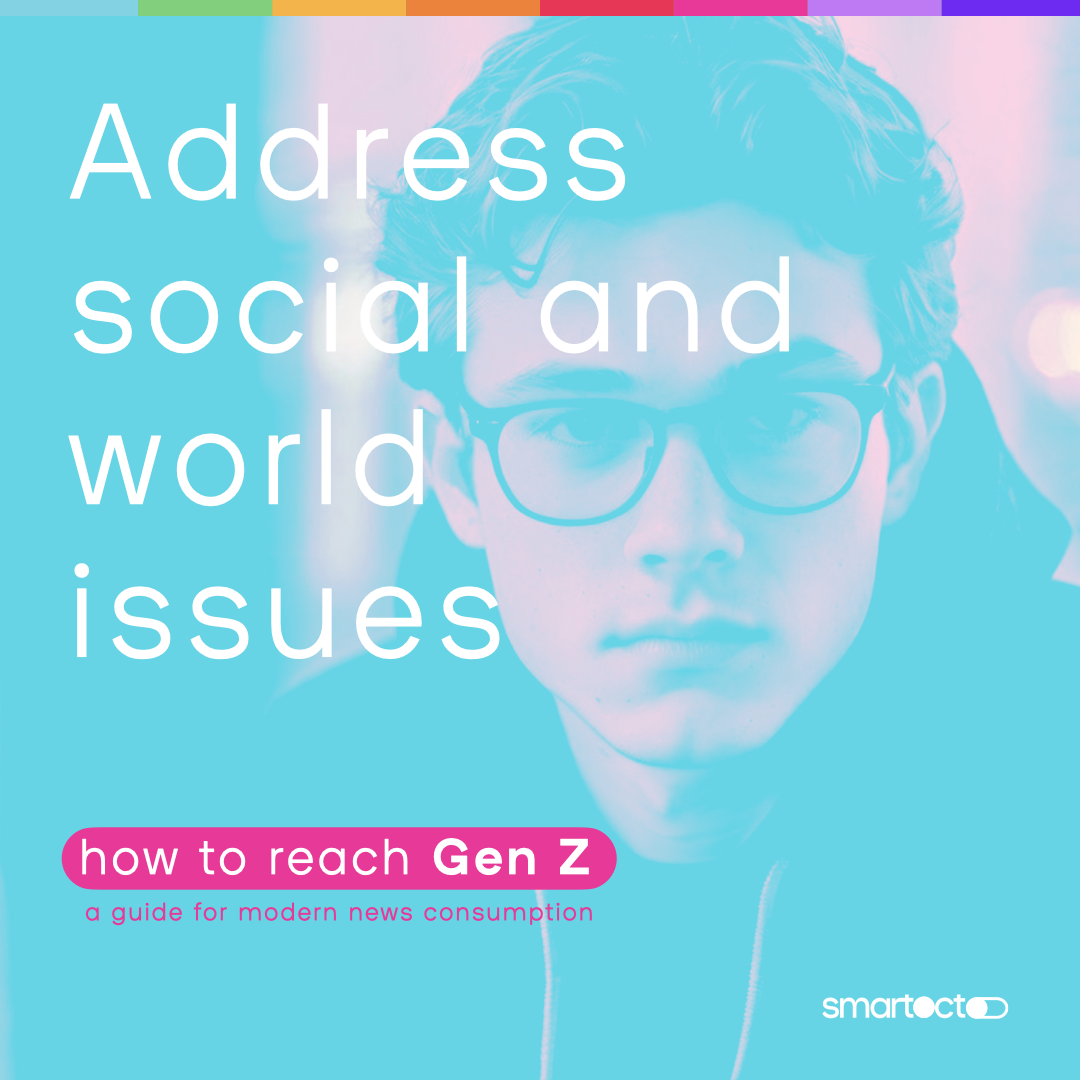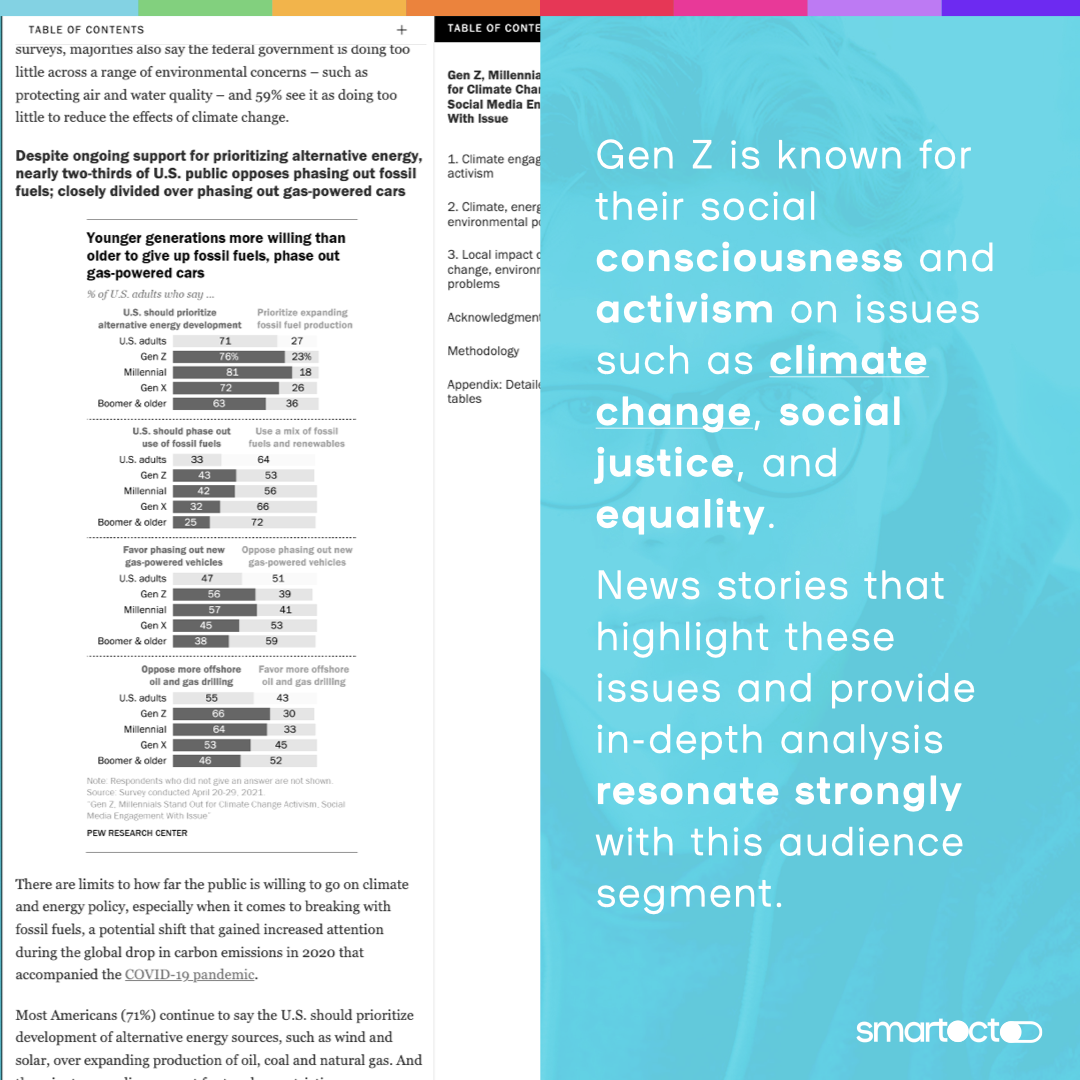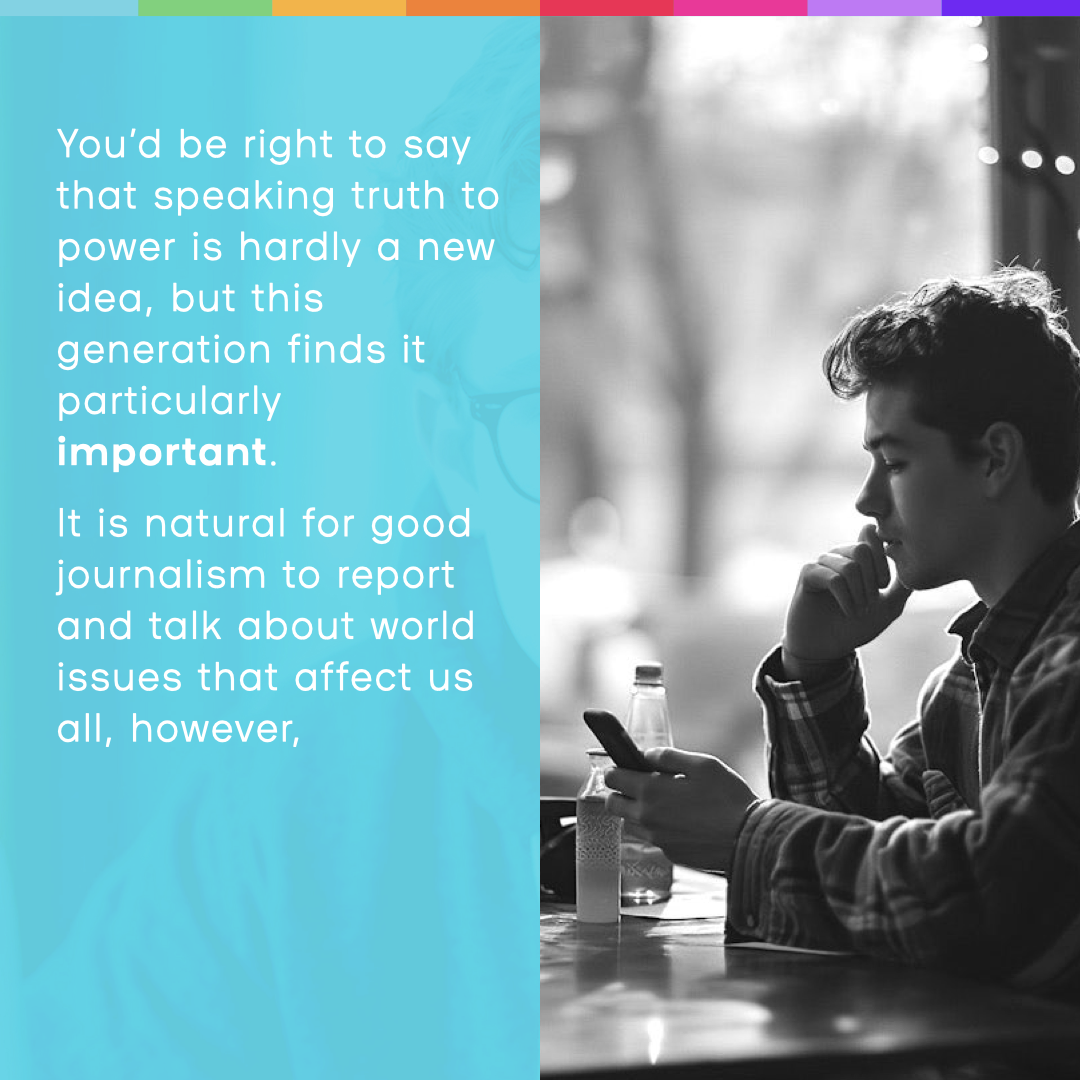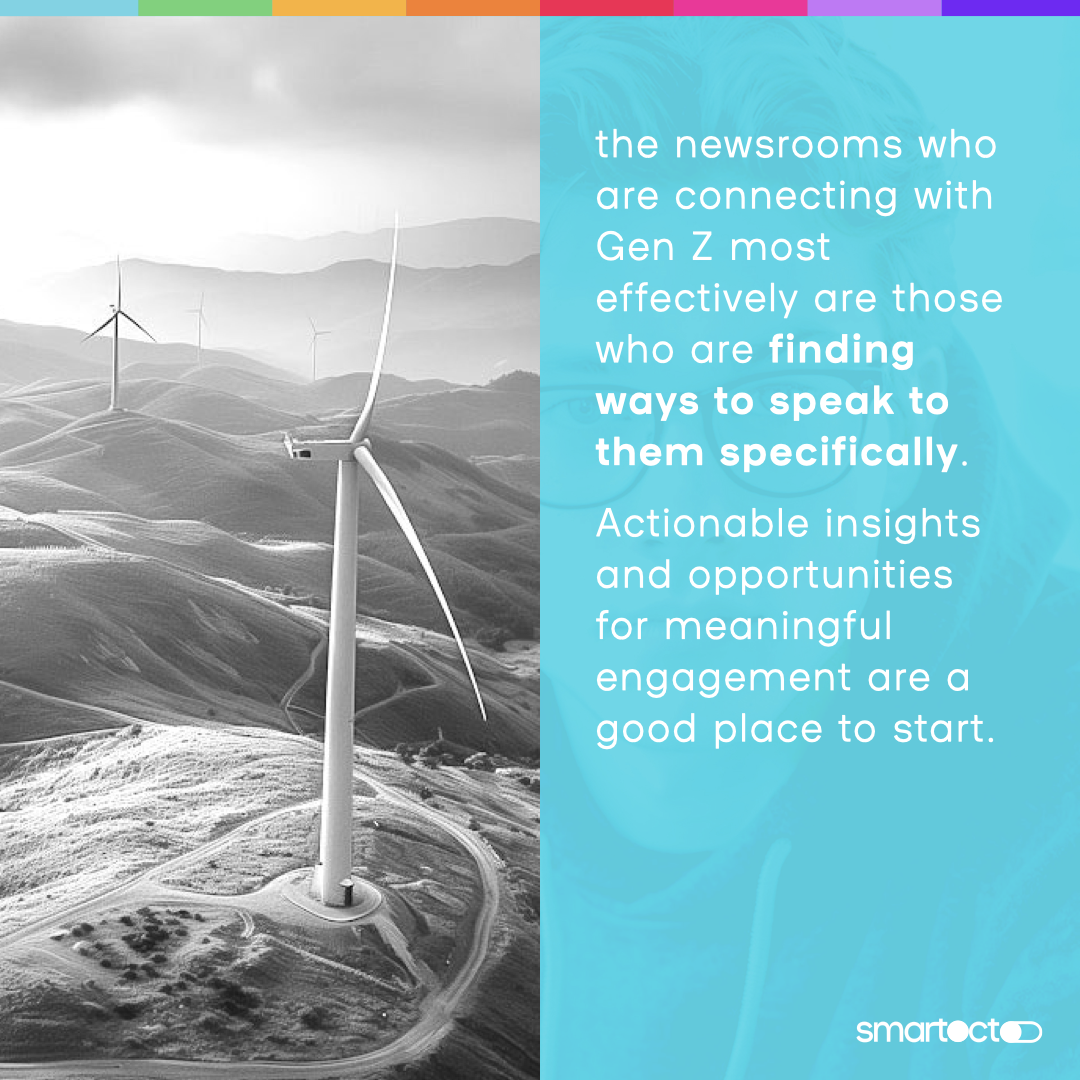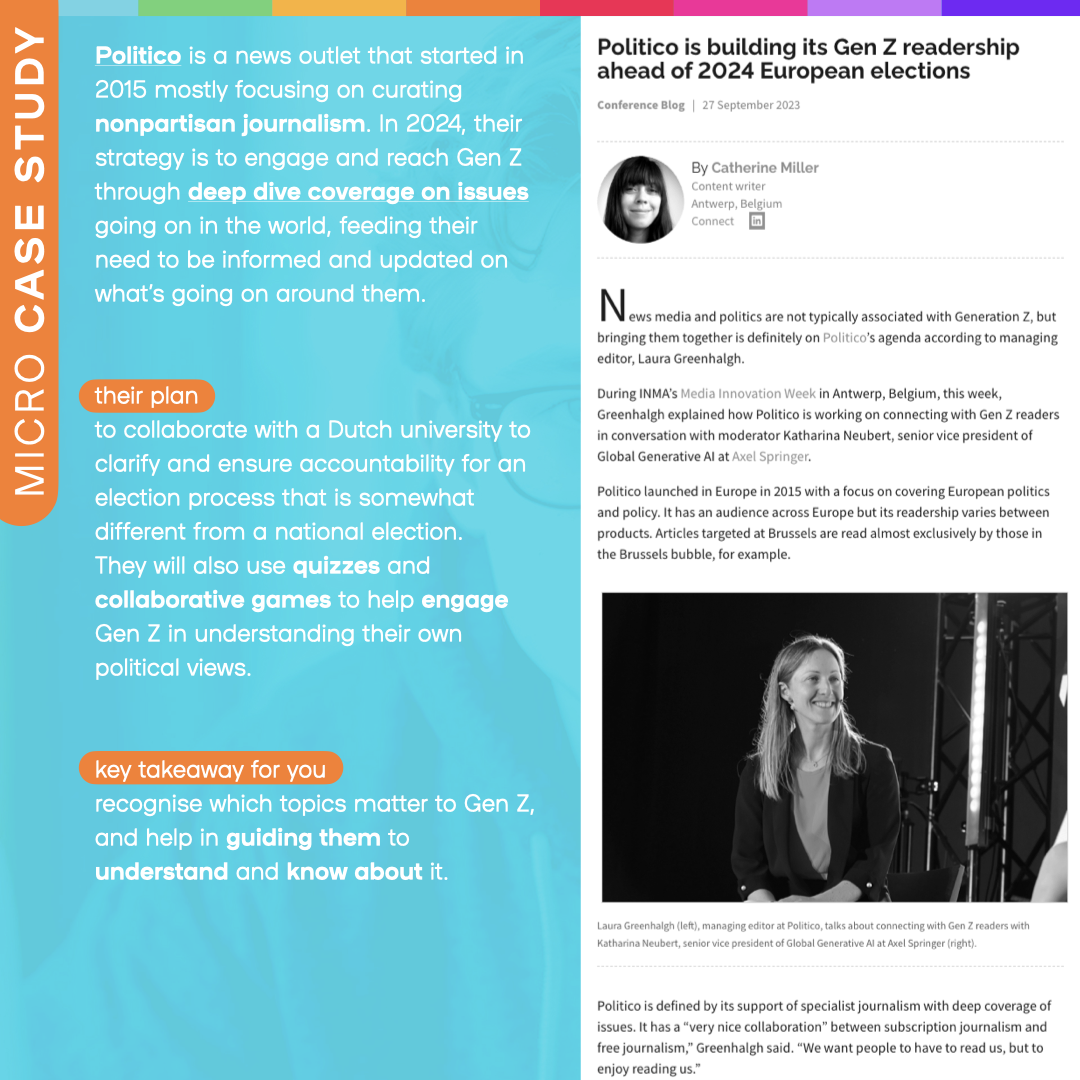The TLDR
Here’s the thing about Gen Z and news. Every generation requires a different strategy to catch their attention, and pursuing Gen Z is no different.. The pain point for newsrooms at this juncture is that while some Millennials may have had a smidge of nostalgia for the Old Ways, Gen Z are unapologetically digital natives, and a strategy based on a theory that they may eventually, possibly, maybe find their way to ‘conventional’ news coverage as they age seems risky.
In the spirit of Gen Z, here’s the TLDR:
- Leverage and utilise digital platforms as they’re intended to be used
- Social platforms are designed for visual content. Make sure content is fit for its format, platform and distribution strategy
- Trust is tricky: personalities tend to trump brands for engagement
- Keep doing what you’re doing; talking and reporting about issues that affect the world, the environment, and everyone in general - just remember who’s reading it
You don’t have to be 21 in order to connect with this generation. You just have to be hyper aware of exactly what Gen Z are interested in, where they’re talking about it, and what their expectations are of you.
And really, that's no different to any other generation, is it?

